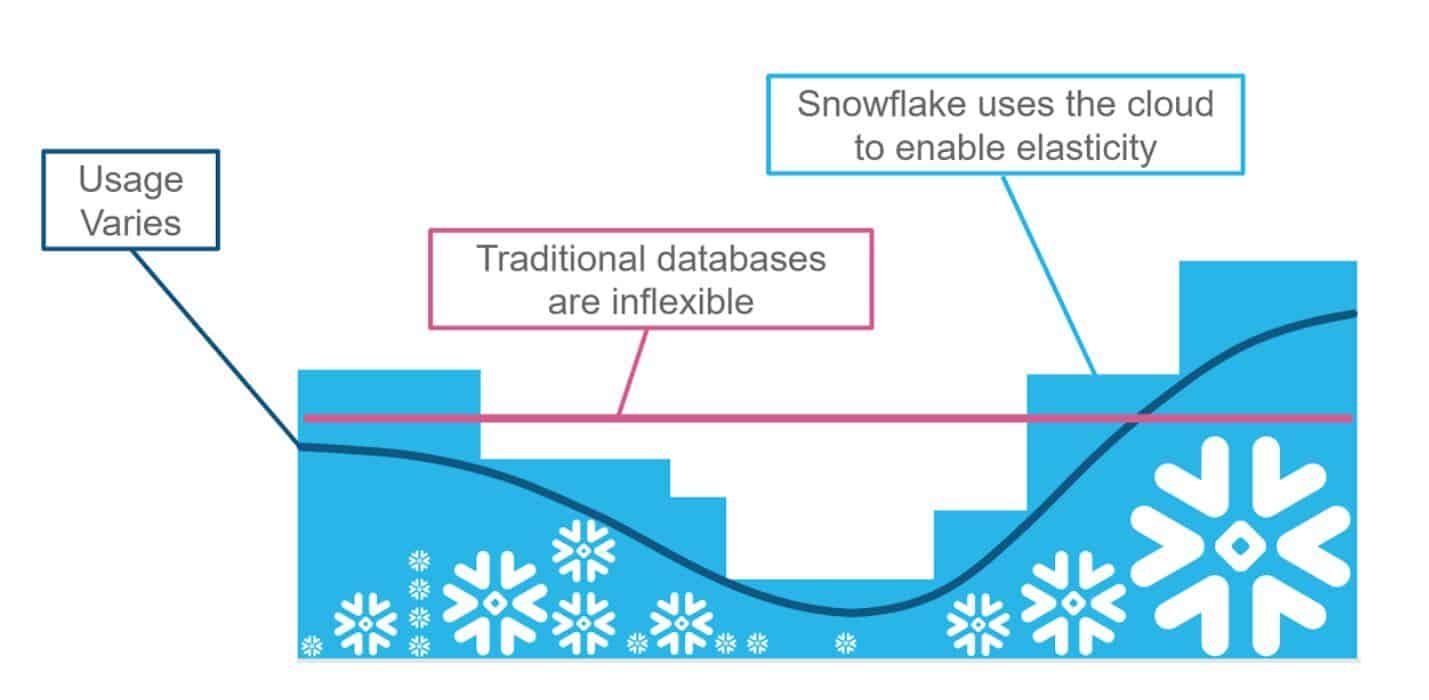
Image Source: Google
Snowflake is a cloud-based data warehousing platform known for its scalability, flexibility, and performance.
To ensure that you are getting the most out of Snowflake and achieving peak performance, it is important to optimize your usage of the platform. If you are in search of snowflake optimization, you may visit Keebo.
Here are 10 ways to optimize Snowflake for peak performance.
1. Choose the Right Virtual Warehouse Size
Virtual warehouses in Snowflake are computing clusters that process queries and load data. Choosing the right size for your virtual warehouse is crucial for optimizing performance. Consider the workload and volume of data you are working with to determine the appropriate size. Start with a smaller warehouse size and scale up as needed.
Factors to consider:
- Query complexity
- Data volume
- Concurrency
2. Use Clustering Keys
Clustering keys in Snowflake help organize data within tables to optimize query performance. By clustering data based on certain columns, you can improve query efficiency and reduce the amount of data scanned during query execution. Choose clustering keys that align with your typical query patterns.
Best practices for using clustering keys:
- Cluster on commonly joined columns
- Avoid clustering on unique or monotonically increasing columns
- Monitor and adjust clustering keys based on query performance
3. Implement Query Optimization Techniques
Optimizing your SQL queries can significantly improve performance in Snowflake. Take advantage of features such as query profiling, query hints, and query optimization to fine-tune your queries for faster execution.
Query optimization tips:
- Use appropriate join types
- Avoid unnecessary subqueries
- Optimize predicates and filters
4. Utilize Materialized Views
Materialized views in Snowflake store precomputed results of queries, reducing the need to recompute the same results repeatedly. By leveraging materialized views for frequently executed queries, you can improve query performance and reduce processing time.
Benefits of materialized views:
- Reduced query processing time
- Improved query performance
- Less strain on computing resources
5. Monitor and Tune Warehouse Scaling
Monitoring the performance of your virtual warehouses in Snowflake is essential for maintaining peak performance. Keep an eye on warehouse utilization, query execution times, and resource consumption to identify opportunities for tuning warehouse scaling parameters.
Key metrics to monitor:
- Warehouse utilization percentage
- Query execution times
- Resource consumption
6. Optimize Data Loading Processes
Efficient data loading processes are key to optimizing performance in Snowflake. Consider using Snowpipe for continuous data loading, optimizing data ingestion methods, and ensuring data is properly staged and formatted for loading into Snowflake.
Tips for optimizing data loading:
- Use appropriate file formats (e.g., Parquet, Avro)
- Partition large data sets
- Avoid data duplication
7. Utilize Data Sharing Efficiently
Data sharing in Snowflake allows you to securely share data with other Snowflake accounts, enabling collaboration and data exchange. To optimize performance when sharing data, consider the data sharing patterns, access controls, and data replication methods.
Best practices for data sharing:
- Define appropriate data sharing roles and privileges
- Implement secure data sharing protocols
- Monitor data sharing performance
8. Implement Security Best Practices
Security is paramount when optimizing Snowflake for peak performance. Implementing security best practices such as multi-factor authentication, role-based access control, and data encryption can help protect your data and ensure compliance with security standards.
Security best practices:
- Enable multi-factor authentication for user accounts
- Use role-based access control to restrict access to sensitive data
- Implement end-to-end data encryption
9. Regularly Monitor and Optimize Performance
Regular monitoring of performance metrics in Snowflake is crucial for identifying bottlenecks and areas for optimization. Use Snowflake's performance monitoring tools to track query performance, warehouse utilization, and data loading times.
Performance optimization strategies:
- Review query execution plans
- Identify and address performance bottlenecks
- Optimize data pipelines and workflows
10. Stay Updated with Snowflake Features and Best Practices
Snowflake continuously releases new features and updates to improve performance and usability. Stay informed about the latest enhancements, best practices, and optimizations recommended by Snowflake to ensure you are leveraging the platform to its fullest potential.
Ways to stay updated:
- Attend Snowflake webinars and training sessions
- Engage with the Snowflake community forums
- Subscribe to Snowflake release notes and updates